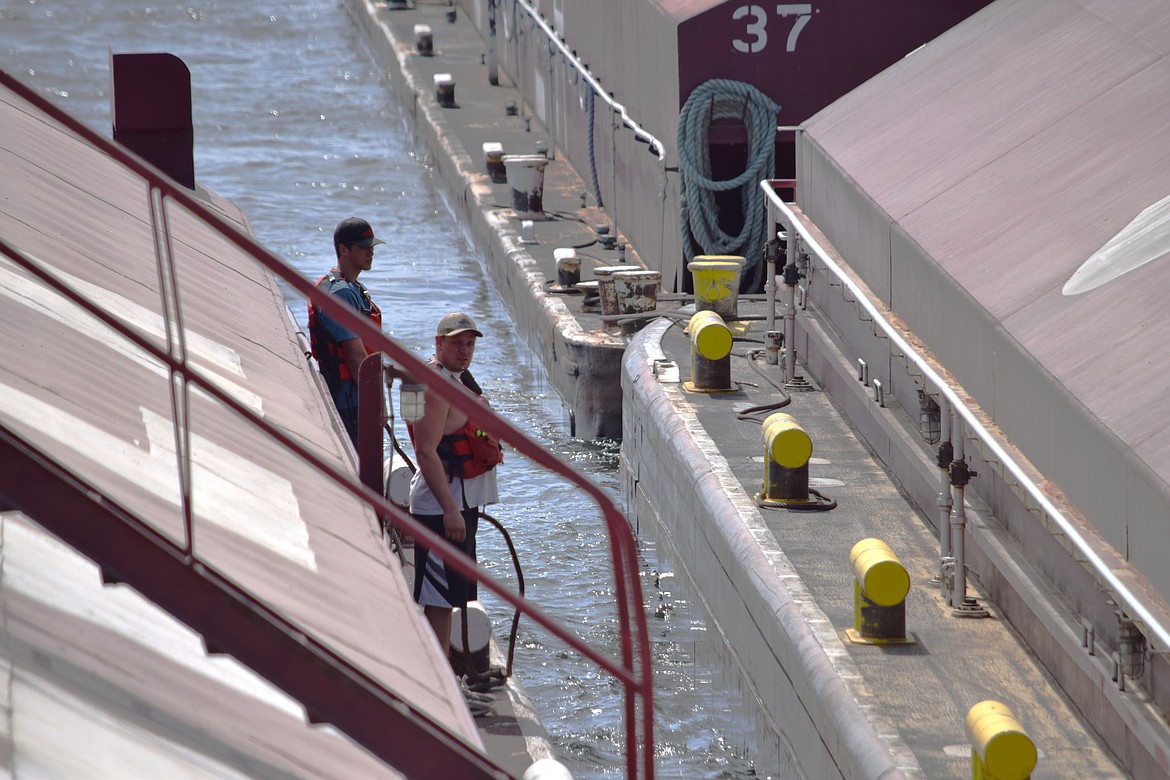
Deckhands Sean Malloy, front, and trainee Colby Glaze stand on the edge of a barge as the tugboat Lincoln edges toward other barges, part of the process of building a tow.
August 31, 2022
Stories this photo appears in:

Ships and piers
Following wheat's journey down the Snake and Columbia rivers
PORTLAND, Ore. — In 1976, Herschel Slavens, then nearly 80, sat down to write about his life, including the time he found himself nearly penniless and looking for work in the early 1920s. “We didn’t have hardly any money so we stopped in Kennewick, Washington, and I got a job working for my cousin … who had a trucking company hauling wheat from a field to a warehouse on the Columbia River,” Slavens wrote in an unpublished memoir he shared with members of his family. With the collapse of farm commodity prices following the end of World War I, it was a tough time to be a farmer, and Slavens — who served in Hawaii, not France, during the war — noted official estimates that as many as half the farmers in the United States went broke from between 1920 and 1922. Still, he was able to find farmwork, moving sacks of wheat in the Tri-Cities before moving on and eventually settling in Montana. “It was put on barges and hauled to Portland,” he wrote. “The combine was pulled by about 30 horses and the wheat was put in 120-pound bags and dropped on the ground for me to pick up.” ...
